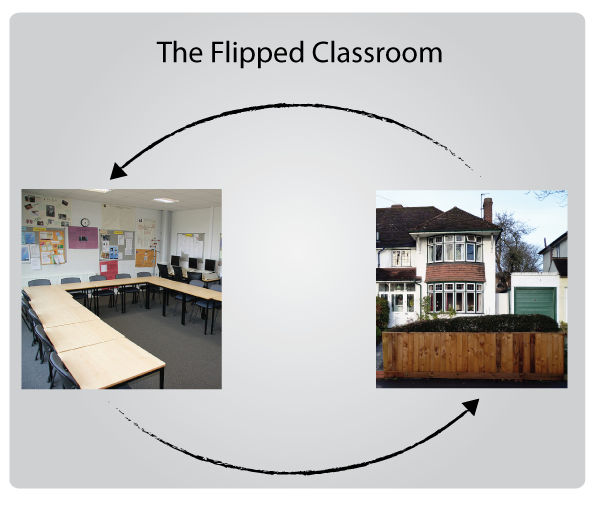Video and the flipped classroom

‘Classroom’ by James F. Clay from Flickr (CC-BY-NC) and ‘My childhood home’ by Dave_S from Flick (CC-BY).
In 2011, Salman Khan the founder of the Khan Academy gave a Ted Talk on the potential of video to revolutionise education. One of the points he focused on was the possibility of using video as part of a flipped classroom. In Khan’s model video content would be used to allow students to engage with and digest teaching content in their own time. This would take place prior to attending a class or coming together with fellow learnings and the time that would normally have been spent in class would now be used to take part in activities or discussion relevant to the learning.
The flipped learning model requires a shift from an instructor-centred approach to a learner-centred approach and provides a flexible approach allowing students to learn at their own pace and in their own time. This shift has the potential to create a more dynamic class environment that can be used to explore ideas and topics in greater depth.
UHI has a variety of core technologies, including Brightspace and Medial, that can help staff facilitate this shift.
Definition of flipped learning:
“Flipped Learning is a pedagogical approach in which direct instruction moves from the group learning space to the individual learning space, and the resulting group space is transformed into a dynamic, interactive learning environment where the educator guides students as they apply concepts and engage creatively in the subject matter.”

All efforts have been made to ensure materials created by the EDU comply with current accessibility guidelines (JISC: Support for learners with disabilities).
If further assistance is required with accessibility matters please contact the student support section in your academic partner UHI: Accessing learner support.
We welcome any comments on how to improve this unit. Please feel free to pass these on at any time.
If you have any difficulty viewing this resource please contact EDU (edu@uhi.ac.uk) with:
- the name of the resource;
- a description of the problem (please give as much detail as possible);
- the section of the resource where the problem occurred;
- your internet browser (you can check your browser version at: http://detectmybrowser.com/).
UHI provides links to external sources of information and may refer to specific Web sites, products, processes or services within this resource. Such references are examples and are not endorsements and whilst every effort is taken to ensure the accuracy of information provided UHI is not responsible for any of the content or guidance. You are advised to exercise caution.
Audio
Video
Reading
Download
Information
External link
Activity
Question
Asterisk
Discussion
Collaboration
Reflection/journal/log
History
Download a copy of this resource in PDF format.
You can also print individual pages by printing directly from the browser.